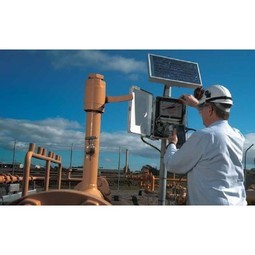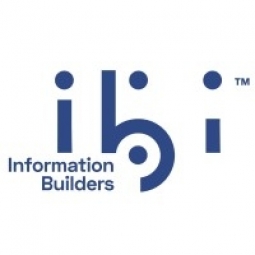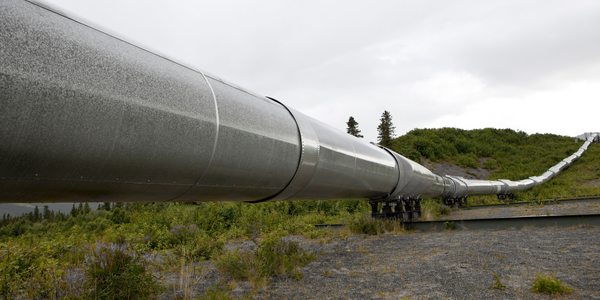公司规模
Large Corporate
地区
- America
- Others
国家
- United States
- Worldwide
产品
- WebFOCUS
- AppStudio
- Portal
- In-Document Analytics
- InfoAssist+
技术栈
- Microsoft .NET
- Cloud Computing
实施规模
- Enterprise-wide Deployment
影响指标
- Productivity Improvements
- Customer Satisfaction
技术
- 分析与建模 - 实时分析
- 应用基础设施与中间件 - 数据可视化
适用行业
- 公用事业
- 石油和天然气
适用功能
- 质量保证
- 维护
用例
- 预测性维护
- 过程控制与优化
- 实时定位系统 (RTLS)
服务
- 云规划/设计/实施服务
- 数据科学服务
- 软件设计与工程服务
- 系统集成
关于客户
Curtiss-Wright Nuclear, which includes the product brands of AP Services, Enertech, Nova, QualTech NP, and Scientech, offers a comprehensive range of products and services for the global nuclear power industry. Curtiss-Wright Nuclear Division’s Information Solutions business unit provides products, services, and software solutions to the global power industry, including computer systems, thermal performance software, and equipment reliability solutions. For many years, Curtiss-Wright has compiled data from the U.S. Nuclear Regulatory Commission (NRC) library concerning the licensing, inspection, and enforcement activities of nuclear power plants. Its customers –primarily utility companies that own and operate nuclear power plants – access this database via subscriptions to Curtiss-Wright’s software-as-a-service (SaaS) applications.
挑战
Curtiss-Wright’s previous reporting environment, based on Microsoft .NET, could not provide clients with the information and visualizations they needed. Requests for custom reports sometimes took days to fulfill. The Nuclear Regulatory Commission (NRC) library is very difficult to navigate, and it’s not conducive to the kinds of research that these power plants want to do. They had pressure from competitors who offered analysis and reporting capabilities that they couldn’t match. They selected WebFOCUS because it has a nice way of visualizing information and a flexible environment for developing and embedding analytic applications in their SaaS solutions. Information Builders also offered implementation capabilities to help them build a new analytic portal.
解决方案
Curtiss-Wright used WebFOCUS to create an analytic portal that enables users to search for and analyze regulatory inspection data through a visually appealing interface. Information Builders Professional Services helped Curtiss-Wright develop dashboards and InfoAppsTM and embed them into the TRENDS portal, along with a self-service ad hoc reporting environment based on InfoAssist+. The entire environment runs in the cloud, giving users functionality on-demand – when and where they need it. This is all part of an IT modernization project in which Curtiss-Wright is transforming its regulatory solutions for a new generation of customers. Information Builders trained Curtiss-Wright’s internal developers to use AppStudio so they can add new functionality to the portal and create new analytic products.
运营影响
数量效益

Case Study missing?
Start adding your own!
Register with your work email and create a new case study profile for your business.
相关案例.

Case Study
Taking Oil and Gas Exploration to the Next Level
DownUnder GeoSolutions (DUG) wanted to increase computing performance by 5 to 10 times to improve seismic processing. The solution must build on current architecture software investments without sacrificing existing software and scale computing without scaling IT infrastructure costs.

Case Study
IoT Solutions for Smart City | Internet of Things Case Study
There were several challenges faced: It is challenging to build an appliance that can withstand a wide range of voltage fluctuations from as low at 90v to as high as 320v. Since the device would be installed in remote locations, its resilience was of paramount importance. The device would have to deal with poor network coverage and have the ability to store and re-transmit data if networks were not available, which is often the case in rural India. The device could store up to 30 days of data.

Case Study
Automation of the Oguz-Gabala-Baku water pipeline, Azerbaijan
The Oguz-Gabala-Baku water pipeline project dates back to plans from the 1970’s. Baku’s growth was historically driven by the booming oil industry and required the import of drinking water from outside of the city. Before the construction of the pipeline, some 60 percent of the city’s households received water for only a few hours daily. After completion of the project, 75 percent of the two million Baku residents are now served around the clock with potable water, based on World Health Organization (WHO) standards. The 262-kilometer pipeline requires no pumping station, but uses the altitude differences between the Caucasian mountains and the capital to supply 432,000 m³/d to the Ceyranbatan water reservoir. To the people of Baku, the pipeline is “the most important project not only in 2010, but of the last 20 years.”

Case Study
GPRS Mobile Network for Smart Metering
Around the world, the electricity supply industry is turning to ‘smart’ meters to lower costs, reduce emissions and improve the management of customer supplies. Smart meters collect detailed consumption information and using this feedback consumers can better understand their energy usage which in turn enables them to modify their consumption to save money and help to cut carbon emissions. A smart meter can be defined in many ways, but generally includes an element of two-way communication between the household meter and the utility provider to efficiently collect detailed energy usage data. Some implementations include consumer feedback beyond the energy bill to include online web data, SMS text messages or an information display in consumers’ premises. Providing a cost-effective, reliable communications mechanism is one of the most challenging aspects of a smart meter implementation. In New Zealand, the utilities have embraced smart metering and designed cost effective ways for it to be implemented. The New Zealand government has encouraged such a move to smart metering by ensuring the energy legislation is consistent with the delivery of benefits to the consumer while allowing innovation in this area. On the ground, AMS is a leader in the deployment of smart metering and associated services. Several of New Zealand’s energy retailers were looking for smart metering services for their residential and small business customers which will eventually account for over 500,000 meters when the multi-year national deployment program is concluded. To respond to these requirements, AMS needed to put together a solution that included data communications between each meter and the central data collection point and the solution proposed by Vodafone satisfied that requirement.

Case Study
Remote Wellhead Monitoring
Each wellhead was equipped with various sensors and meters that needed to be monitored and controlled from a central HMI, often miles away from the assets in the field. Redundant solar and wind generators were installed at each wellhead to support the electrical needs of the pumpstations, temperature meters, cameras, and cellular modules. In addition to asset management and remote control capabilities, data logging for remote surveillance and alarm notifications was a key demand from the customer. Terra Ferma’s solution needed to be power efficient, reliable, and capable of supporting high-bandwidth data-feeds. They needed a multi-link cellular connection to a central server that sustained reliable and redundant monitoring and control of flow meters, temperature sensors, power supply, and event-logging; including video and image files. This open-standard network needed to interface with the existing SCADA and proprietary network management software.








